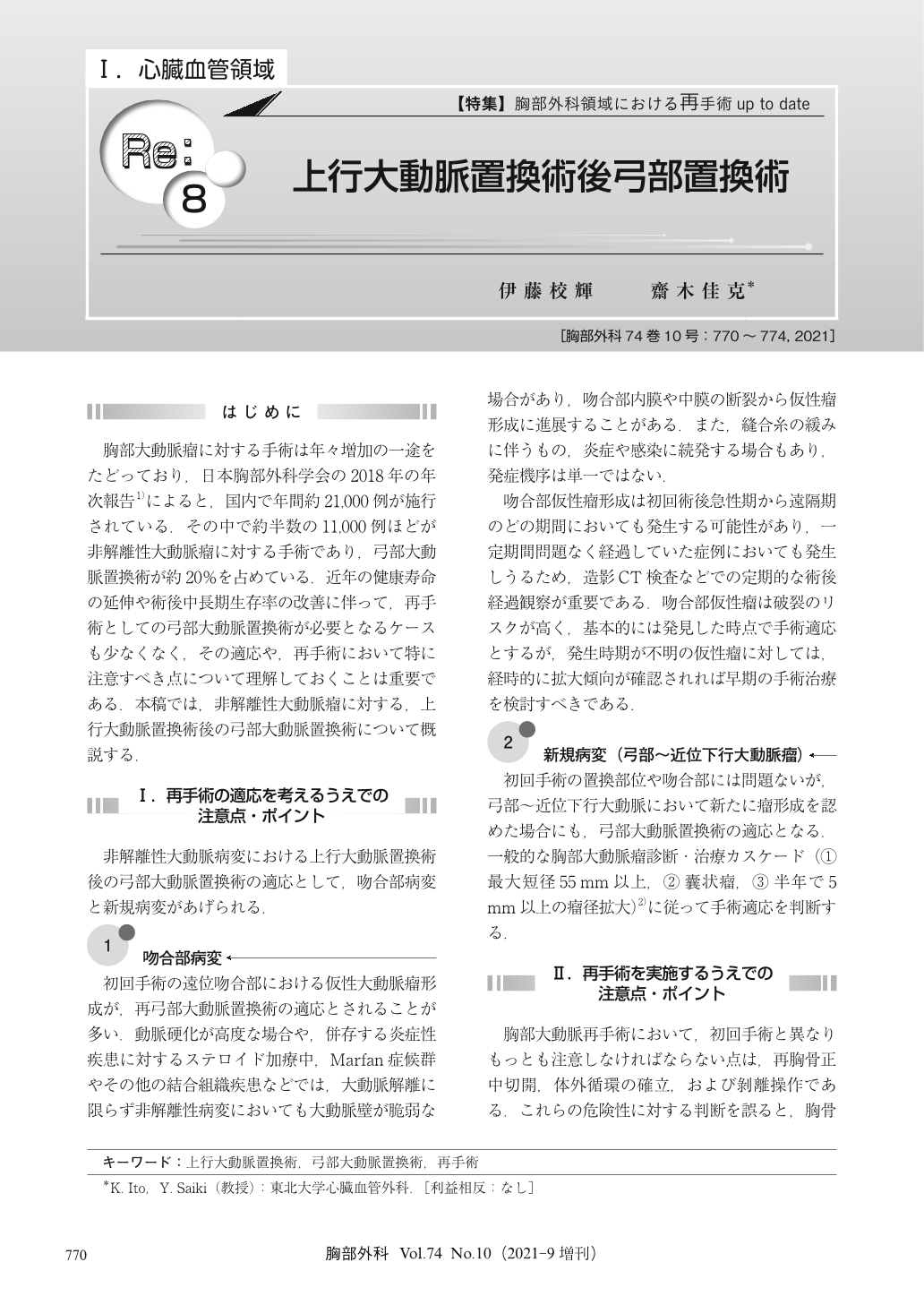Japanese
English
- 有料閲覧
- Abstract 文献概要
- 1ページ目 Look Inside
- 参考文献 Reference
胸部大動脈瘤に対する手術は年々増加の一途をたどっており,日本胸部外科学会の2018年の年次報告1)によると,国内で年間約21,000例が施行されている.その中で約半数の11,000例ほどが非解離性大動脈瘤に対する手術であり,弓部大動脈置換術が約20%を占めている.近年の健康寿命の延伸や術後中長期生存率の改善に伴って,再手術としての弓部大動脈置換術が必要となるケースも少なくなく,その適応や,再手術において特に注意すべき点について理解しておくことは重要である.本稿では,非解離性大動脈瘤に対する,上行大動脈置換術後の弓部大動脈置換術について概説する.
Surgeries for non-dissected aortic arch diseases have been performed with increasing frequency in recent years. Accordingly, the awareness of the pitfalls in reoperation after a previous ascending aortic replacement is needed. Indications for redo total aortic arch replacement after a prior ascending aortic replacement include pseudoaneurysm formation at the distal anastomosis site and newly developed aortic arch aneurysms. At reoperation, we should take the assurance of safety during re-sternotomy into consideration. Cannulation sites should be strategically selected. The radiologic features of the high-risk re-sternotomy include a close approximation (<5 mm) between the sternum and the aorta or the previously placed vascular prosthesis and a presence of pseudoaneurysm underneath the sternum. In such cases, it is reasonable to establish partial cardiopulmonary bypass and selective cerebral perfusion via bilateral carotid artery cannulation prior to sternotomy to avoid disastrous neurological complications. Adhesions around a previously placed vascular prosthesis with innominate vein or main pulmonary artery can be troublesome;thus, care must be taken so as not to injure the surrounding vital organs. Liberal employment of hypothermia can be life-saving by preserving brain, heart and other vital end-organs at the expense of prolonged procedure time.

© Nankodo Co., Ltd., 2021


